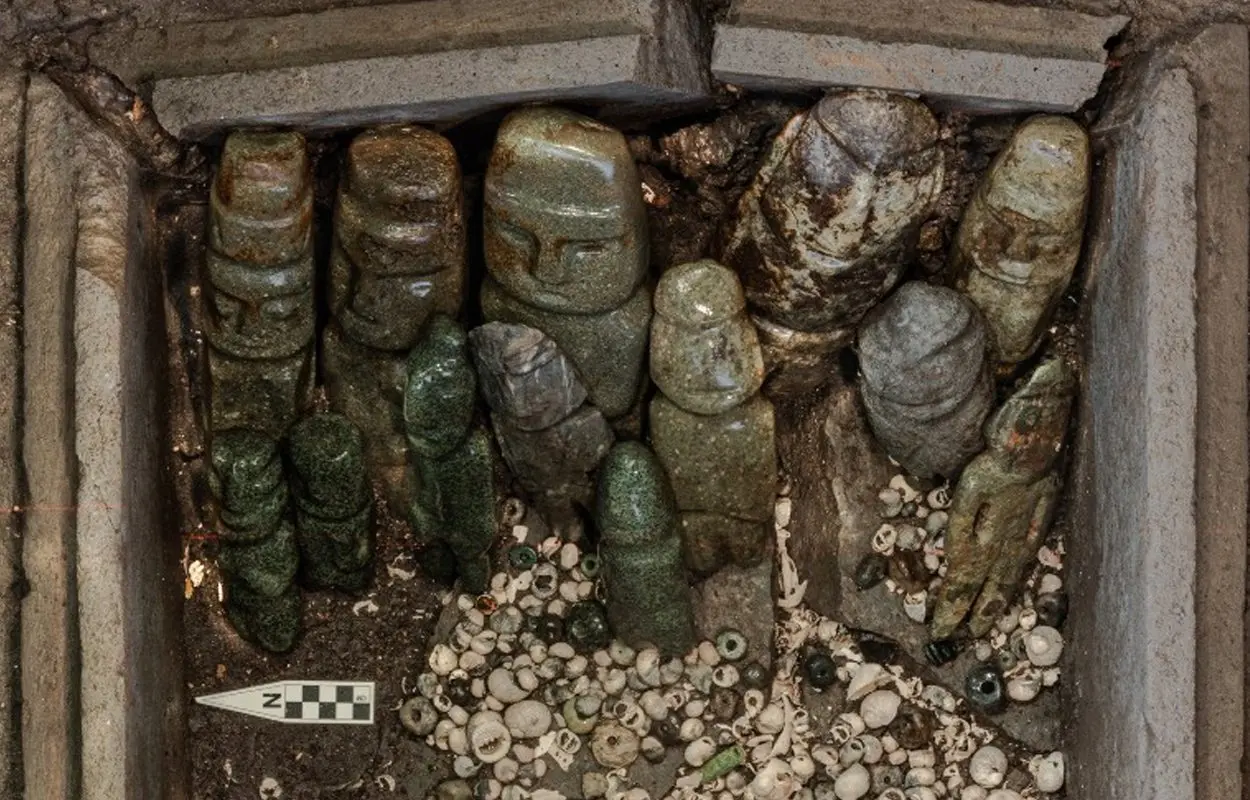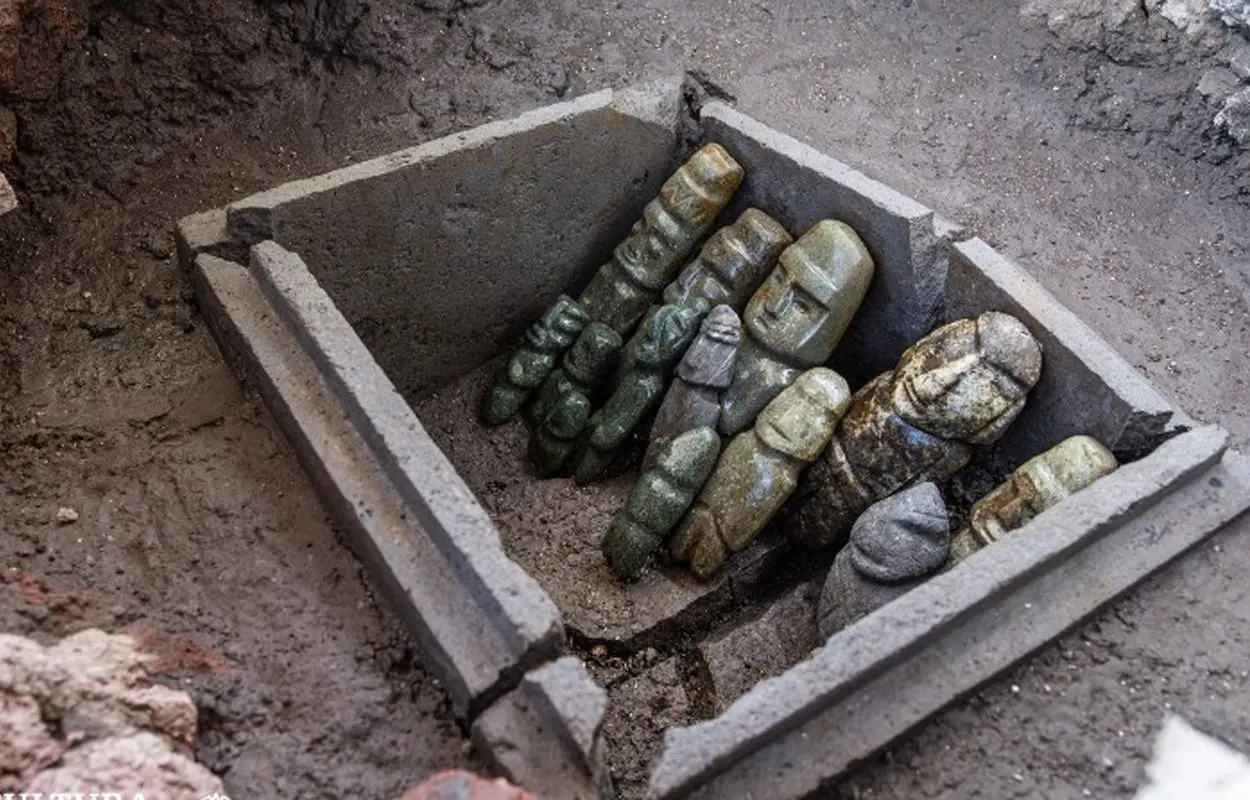Archaeologists from the Templo Mayor project and the National Institute of Anthropology and History (INAH) have found anthropomorphic figurines placed as an offering at Templo Mayor in Mexico City.
Templo Mayor was the heart of a temple complex in Tenochtitlan, the capital of the Aztec Empire. The temple was called the huey teocalli in the Nahuatl language and was dedicated to Huitzilopochtli, the god of war, and Tlaloc, god of rain and agriculture.
Construction of the temple began sometime after AD 1325, but was destroyed by the Spanish in AD 1521 following the conquest of Tenochtitlan. The present-day archaeological site lies to the northeast of the Zocalo, or main plaza of Mexico City, on the corner of what is now the streets of Seminario and Justo Sierra.
Archaeologist excavating at Templo Mayor have found a stone chest known as tepetlacalli in Nahuatl, containing 15 anthropomorphic figurines and numerous green stone beads, snails, shells and marine corals.

The figurines are in the Mezcala style, a Mesoamerican culture that emerged in the Middle and Late Preclassic within Mesoamerican chronology (700 to 200 BC). Archaeologists speculate that the Aztecs valued Mezcala objects and excavated them from Mezcala sites in the Guerrero state of southwestern Mexico to be placed as ritual offerings.
“The figurines were already true relics, some of them more than 1,000 years old, and presumably they served as cult effigies,” says archaeologist López Luján.
The stone chest was found in a context of stage IVa of the Templo Mayor, which dates from the rule of Moctezuma Ilhuicamina between AD 1440 and 1469. In addition to the figurines, the chest contains 186 objects placed as offerings, such as rattlesnake-shaped earrings, 137 beads made from various green stones, and 1,942 objects made from shells, snails, and corals.
Header Image Credit : Antonio Marín Calvo





